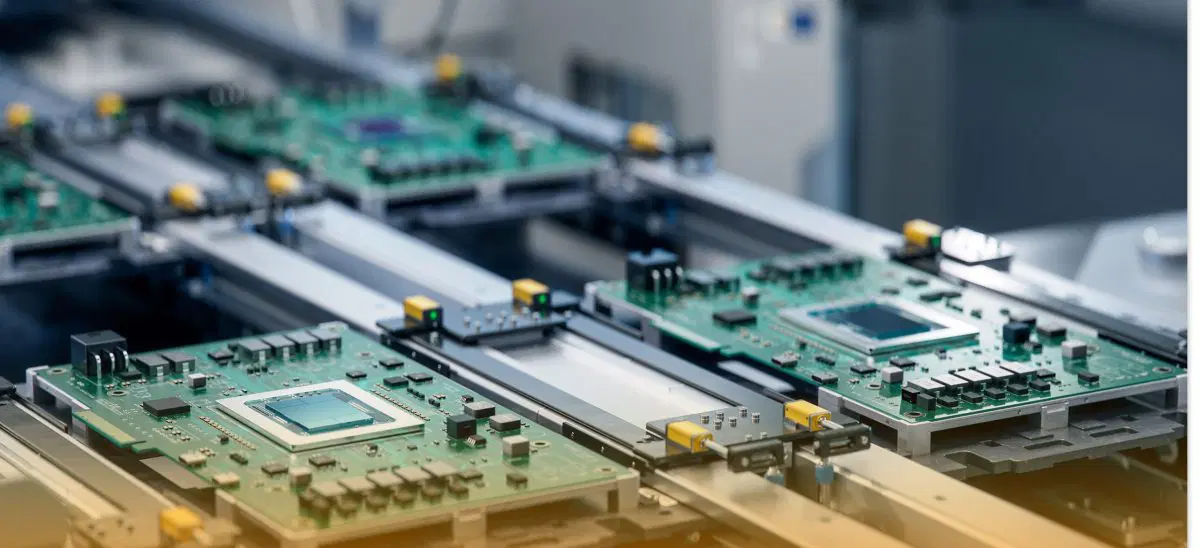Industrial automation PCB assembly is the backbone of modern manufacturing and control systems, enabling machines to operate with precision, efficiency, and reliability. Printed Circuit Boards (PCBs) serve as the foundation for electronic circuits, connecting components in a structured and reliable manner. In industrial automation, where machinery must operate continuously under varying conditions, PCB assembly plays an even more critical role. Without robust and well-designed PCBs, automation systems would lack the stability and accuracy required for high-volume, error-free production.
Understanding PCB Assembly in Industrial Automation
PCB assembly refers to the process of mounting and soldering electronic components onto a printed circuit board, ensuring that each connection is secure and functional. In industrial automation, these boards control everything from robotic arms on production lines to programmable logic controllers (PLCs) in automated processes. The emphasis is not only on building functional boards but also ensuring they can withstand industrial environments, including exposure to vibrations, extreme temperatures, and electrical interference.
Role of PCBs in Automation Systems
PCBs in automation systems serve as the communication hubs between sensors, actuators, and control software. They process input from various sensors, make logical decisions based on programming, and trigger actions in machines. For example, in an automated packaging line, PCBs might coordinate conveyor belts, sealing machines, and labeling devices with split-second precision.
Importance of Precision in Industrial PCB Assembly
In industrial automation, even a small error in PCB assembly can lead to significant production downtime or defective products. Precision ensures that each solder joint is reliable and each component is correctly positioned, minimizing the risk of system failures.
Types of PCBs Used in Industrial Automation
Different types of PCBs are used in automation, depending on the complexity and requirements of the system. Single-sided PCBs are used in simple control circuits, double-sided PCBs offer more flexibility, and multi-layer PCBs are essential for complex automation systems that require high-speed signal processing and compact designs.
Steps Involved in PCB Assembly for Industrial Automation
The process begins with PCB design and prototyping, where engineers create the circuit layout and test it before full production. Next comes component placement, where automated pick-and-place machines precisely position parts. Soldering techniques, such as reflow soldering for SMT or wave soldering for THT, are then used to secure the components. Finally, inspection and testing ensure the board meets quality standards before it is integrated into industrial machinery.
Surface-Mount Technology (SMT) in Automation PCB Assembly
SMT has revolutionized PCB assembly by allowing components to be mounted directly onto the surface of the board, enabling smaller designs and faster production. In Industrial Automation PCB Assembly, SMT offers benefits such as higher component density, reduced size, and improved performance in high-speed applications.
Through-Hole Technology (THT) in Industrial Automation
Although SMT dominates modern PCB assembly, THT is still valuable for components that require extra mechanical strength, such as connectors and power modules. In automation systems that experience frequent vibrations or mechanical stress, THT can enhance durability.
Materials and Components Used in Industrial PCBs
Industrial PCBs often use high-quality fiberglass substrates like FR4, along with specialized copper layers for conductivity. Components such as microcontrollers, relays, resistors, and capacitors are selected for their ability to withstand extended operation without degradation.
Automation in the PCB Assembly Process
Modern PCB assembly heavily relies on robotics and AI for precision and speed. Automated Optical Inspection (AOI) systems scan each board to detect solder defects, misplaced components, or manufacturing flaws, ensuring that only high-quality boards proceed to final assembly.
Challenges in Industrial Automation PCB Assembly
Manufacturers face challenges such as designing PCBs that can tolerate high temperatures, resist corrosion, and manage increasingly complex circuits. These requirements demand advanced design strategies and rigorous testing.
Quality Standards and Certifications in Industrial PCB Manufacturing
Industrial PCB manufacturers must adhere to strict quality standards like ISO 9001 for process quality, IPC standards for PCB reliability, and RoHS compliance to ensure environmental safety.
Cost Considerations in Industrial PCB Assembly
Balancing quality with production costs is a major consideration. While automation can reduce labor expenses, high-grade materials and thorough testing add to production costs, requiring careful budgeting.
Future Trends in Industrial Automation PCB Assembly
The future of PCB assembly in industrial automation is shaped by miniaturization, high-density interconnect (HDI) technology, and integration with IoT. Smart manufacturing systems will rely on PCBs capable of handling massive data streams and enabling predictive maintenance.
Conclusion
Industrial automation PCB assembly is an intricate process that blends precision engineering, advanced technology, and strict quality control. As automation systems become more sophisticated, the demand for durable, high-performance PCBs will continue to grow, driving innovation in design, materials, and assembly techniques.

